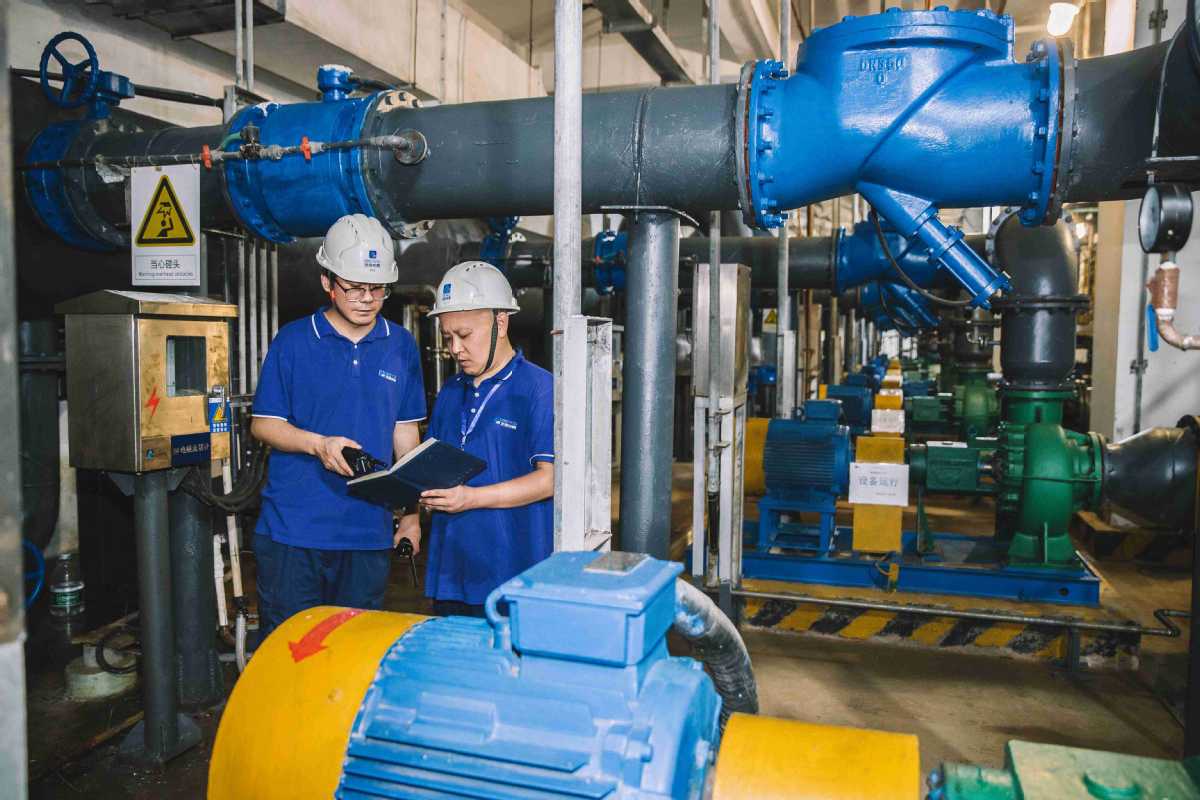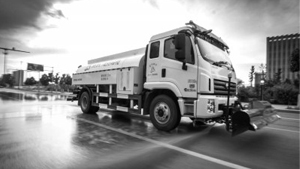CHINA DAILY:BEWG expands environmental plants, eyes BRI, RCEP business 2022-06-13

Company helps as other countries demand better water solutions
With many countries developing low-carbon and environmentally friendly projects to pursue sustainable growth and seeking new technology edges, Beijing Enterprises Water Group Ltd (BEWG), a Hong Kong-listed water and environmental protection services provider, plans to further expand its business presence in markets related to the Belt and Road Initiative to maintain robust growth in the coming years.
Operating 1,370 water supply and sewage treatment plants globally, including a number of service facilities in eight countries that include Singapore, Malaysia, Australia and Portugal, the Beijing-based State-owned enterprise is currently conducting a rehabilitation work project in Gaborone, capital of Botswana.
Under a rehabilitation-operation contract, the Botswana Glen Valley wastewater treatment plant and sewer network project will have a water supply capacity of 90,000 metric tons per day. The Chinese company will be responsible for installation and construction work including screening, de-gritting, pumping station, primary clarifier, biological reactor, secondary clarifier, disinfection, sludge dewatering, odor treatment and networks. The project is scheduled to be completed in July.
Ma Yuntong, BEWG's assistant president, said that driven by many countries' fast-growing pace of urbanization and industrialization, demand for upgrading the existing water supply and sewage treatment plants has significantly soared in recent years, and many of them have surging demand to build new facilities, such as desalination plants, solid waste treatment plants and other environmentally friendly projects.
Backed by the tangible growth of the BRI, as well as the implementation of the Regional Comprehensive Economic Partnership agreement, which took effect on Jan 1, Ma said these factors will propel regional economic integration and encourage Chinese companies to invest more in these markets.
She said the company is keen to enrich its existing businesses abroad and will continue to seek new opportunities to enter other emerging markets. For instance, member economies of the Association of Southeast Asian Nations will remain its priority markets in the years to come.
After putting the PANTAI II Sewage Treatment Plant into operation in Kuala Lumpur, Malaysia in 2017, an important step for the company to support the tangible growth of the BRI, BEWG completed the acquisition of Trility Group, one of the three largest private water companies in the Australian water market in 2018, which operates all over Australia and New Zealand, serving customers in the municipal, resource and industrial sectors.
Unlike developing markets, where demand for EPC projects is still strong, the infrastructure and service level in developed markets in Australia, many European countries and the United States is well-developed and mature. EPC stands for engineering, procurement and construction, a common arrangement in the construction industry. Many of the practical operational experiences in developed markets certainly can be applied in the domestic market, she said.
Apart from focusing on the recycling of water resources and the protection of water ecology, the group will deploy more resources and manpower to build a strong industry chain by entering the field of water services-related equipment manufacturing and seize more market share in large industrial parks to conduct treatment businesses of sludge, kitchen waste, hazardous waste and other materials.
With China striving to peak carbon emissions by 2030 and achieve carbon neutrality by 2060, BEWG is running a number of low-carbon sewage treatment plants across China. For example, BEWG Chandong Sewage Treatment Plant, one of its subsidiaries located in Luoyang, Henan province, has been using power generated by photovoltaic equipment to run the daily operation and cut carbon emissions.
As China has increased its efforts toward combating water pollution, she said more low-carbon sewage treatment plants are expected to be built across the country, especially in the Yangtze River Delta and the Pearl River Delta regions.
She found that many affluent counties and villages in eastern provinces, in particular Zhejiang and Jiangsu provinces, have a growing preference for adopting low-carbon lifestyles and advanced water treatment services.
China will improve sewage water treatment capabilities and enhance the transformation of sewage into resources between 2021 and 2025, according to a document jointly issued by 10 government departments, including the National Development and Reform Commission, last year.
By 2025, the country will see a marked improvement in the efficiency of sewage collection, while sewage treatment capabilities in cities and counties will meet local social and economic development demands.
Meanwhile, in cities suffering from water shortages, more than 25 percent of the total sewage treated should be used as reclaimed water, said the document. For the Beijing-Tianjin-Hebei region in North China, the rate should be over 35 percent.
In the face of a more complex and severe external environment, BEWG, supported by 20,000 employees globally, saw sales revenue surge by 10 percent year-on-year to $3.55 billion in 2021, while its profit amounted to $535 million, according to its latest annual financial report.
"As China plans to establish an organized, safe, environmentally friendly and economical pattern in wastewater resource utilization by 2035, the country has made notable progress in promoting high-quality and green development of its rivers and pushing forward the recycling of wastewater in key areas such as urban domestic sewage and industrial wastewater, as well as agricultural and rural sewage treatment," said Wei Xiaoquan, a researcher specializing in regional economic development at the University of International Business and Economics in Beijing.
For instance, China's Yangtze River Protection Law, which took effect on March 1, 2021, stipulates explicitly all the legal aspects of environmental protection of the Yangtze River and the development along the Yangtze River basin.
The law covers the overall planning of land resources, the allocation of water resources, resources protection, harnessing of water pollution, rehabilitation of ecology, the overall development, upgrading and transformation of traditional industries and legal responsibility.
About 8,000 high-polluting factories have been moved in the region over the past six years. All the petrochemical works and iron-steel complexes have been transformed by green technologies thoroughly, according to information released by the Ministry of Water Resources.
Despite the protracted COVID-19 pandemic, the growth of the BRI continues to demonstrate strong resilience and vitality, injecting robust impetus into global openness and cooperation, Wei said.
China's economic and trade ties with countries and regions participating in the BRI have strengthened significantly over the past decade. From 2013 to 2021, its direct investment in economies related to the BRI totaled $161.3 billion, while 32,000 companies were established in China by these countries and regions, with a combined investment of $71.2 billion, according to the Ministry of Commerce.










